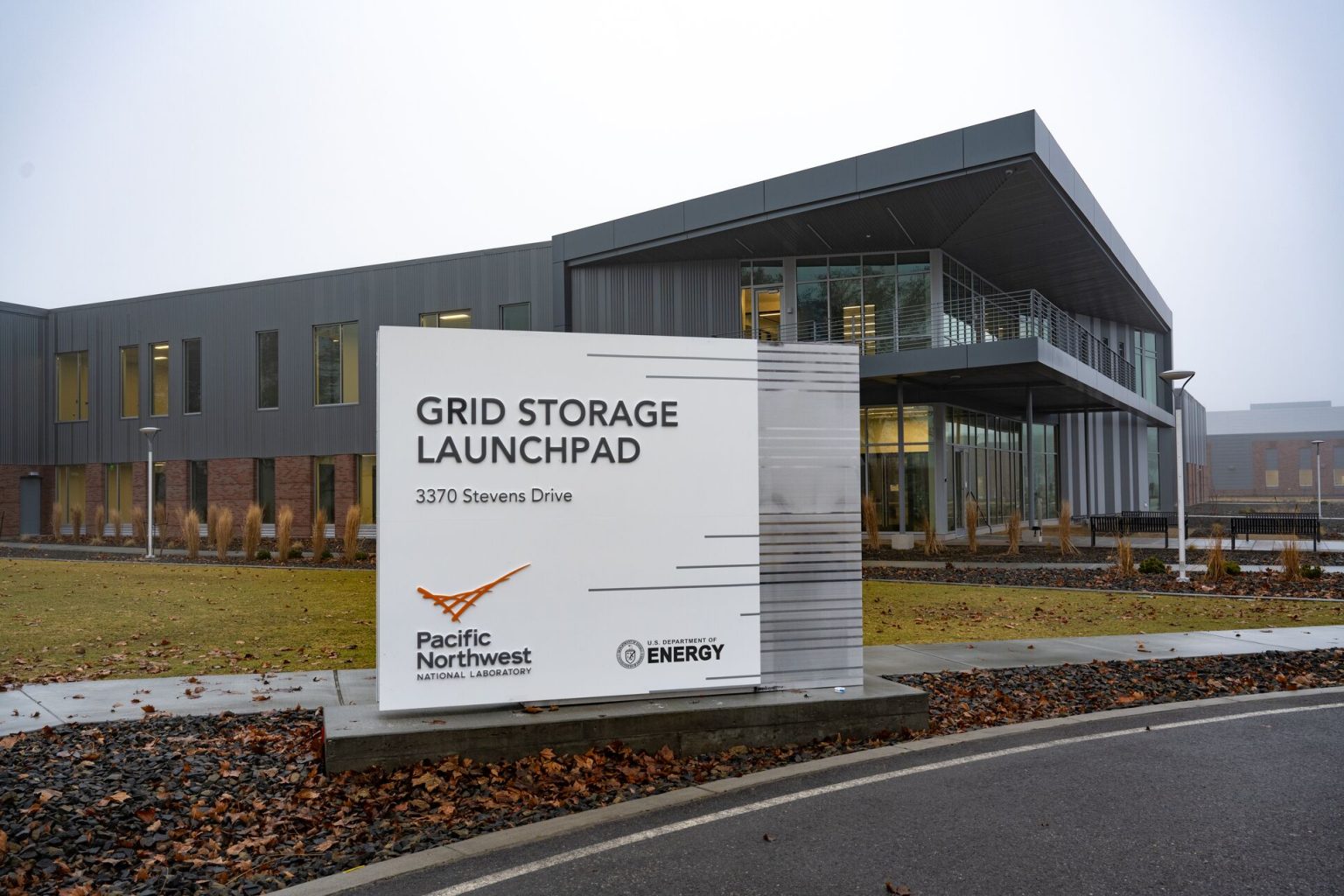The new Grid Storage Launchpad in Richland, Wash., is a $75 million research center at the Pacific Northwest National Laboratory (PNNL) aimed at developing grid-scale energy storage technologies. This facility brings together researchers and industry partners to work on all stages of the battery development cycle, including state-of-the-art batteries crucial for storing energy from renewable sources and providing backup power during outages. The increasing demand for electricity in the Pacific Northwest, driven by factors such as the adoption of AI, electrification of various processes, high-tech manufacturing, and climate change-induced extreme weather events, highlights the importance of advancements in energy storage technology.
Senator Maria Cantwell joined PNNL Director Steve Ashby and other Department of Energy officials in celebrating the opening of the GSL. Cantwell emphasized the significance of grid storage in integrating more renewable energy sources into the grid and ensuring reliability in the Washington economy. PNNL, a major research institution with a focus on clean energy solutions, is also collaborating with Microsoft on projects using AI and high-performance computing to reduce lithium content in batteries. The goal is to discover new ways to enhance energy storage capabilities and support the transition to cleaner sources of energy.
The GSL is part of efforts to address the growing concern about the nation’s ability to meet future energy demands. With an expected 30% spike in electricity needs over the next decade in the Pacific Northwest, advancements in grid-scale energy storage technologies are essential. The rapid adoption of AI and its energy-intensive applications, coupled with factors like transportation electrification, home energy consumption, and climate change impacts, are driving the increase in electricity demand. The GSL provides a platform for collaboration between researchers and industry partners to develop innovative solutions to meet these challenges.
The partnership between PNNL and Microsoft exemplifies the use of cutting-edge technologies like AI and cloud computing in addressing energy storage challenges. By leveraging these tools, researchers aim to reduce the lithium content in batteries by up to 70% over a three-year collaboration period. This project underscores the importance of technological innovation in driving advancements in clean energy solutions. The GSL, with its state-of-the-art facilities and collaborative environment, is poised to play a crucial role in accelerating the development of grid-scale energy storage technologies.
The dedication event for the GSL highlighted the potential impact of grid storage on the Washington economy and the state’s leadership in providing affordable, clean energy. Senator Cantwell emphasized the role of reliable, clean energy sources in driving economic growth across various sectors, from manufacturing to information technology. By investing in grid-scale energy storage technologies, the Pacific Northwest can enhance its energy infrastructure, support the integration of renewable energy sources, and contribute to sustainability efforts. The GSL represents a significant step forward in advancing energy storage research and development, with the goal of meeting the region’s growing electricity demands while reducing reliance on traditional fossil fuels.
In conclusion, the Grid Storage Launchpad at PNNL represents a major investment in the development of grid-scale energy storage technologies to address the nation’s future energy needs. With a focus on collaboration between researchers and industry partners, the GSL aims to drive advancements in battery technology for storing renewable energy and enhancing grid reliability. The partnership between PNNL and Microsoft, utilizing AI and high-performance computing, exemplifies the innovative approaches being taken to tackle energy storage challenges. By leveraging cutting-edge technologies and scientific expertise, the GSL is poised to play a key role in accelerating the transition to cleaner, more sustainable energy sources in the Pacific Northwest and beyond.


